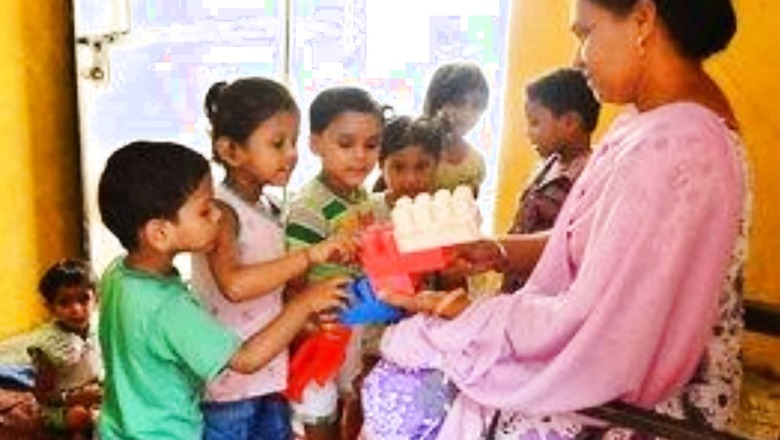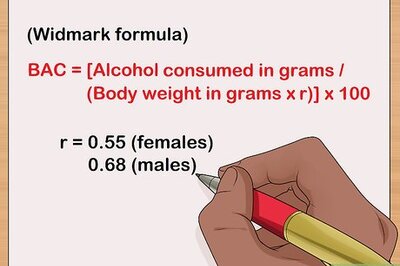
views
In India, with the initiation of schemes like POSHAN 2.0, nutrition is gradually gaining importance as an important aspect of health. With an increase in our understanding of health and nutrition, we are now able to test and prescribe individualised nutritional recommendations. Now, instead of population level recommended dietary allowance (RDA), it is possible to get personalised nutrition guidance based on comorbidities, genetic makeup and family history. As we just observed POSHAN maah (month) in September, let us talk about malnutrition.
Malnutrition is the imbalance in intake of nutrients, proteins, carbohydrates and fats. Either you take too much of them or too little. The World Health Organization(WHO) categorises malnutrition into three categories — undernutrition, micronutrient-related malnutrition and obesity.
The first is what we generally associate with malnutrition, undernutrition. This includes deficiencies in calorie intake in the form of insufficient carbohydrates, proteins and fats.This includes conditions like wasting, stunting and being underweight. A huge portion of disease burden in under 5 years in our country is due to this category of malnutrition. Most of the government’s nutrition interventions are focused on elimination of undernutrition.
The second category is micronutrient-related malnutrition. It encompasses both micronutrient deficiencies and excess. These include conditions like iron deficiency anaemia.
The final category is malnutrition associated with obesity and diet-related noncommunicable diseases, such as heart disease, stroke, diabetes and high blood pressure. As the country is developing, the burden of non-communicable diseases is increasing. Nutrition has played a significant role in this. With the rise of packaged food, food with high salt and sugar content in food obesity related malnutrition is on the rise.
India is now facing a double whammy of malnutrition, with the younger population being affected by undernutrition and the older population affected by malnutrition related to obesity. We currently have no significant programmes that target malnutrition affected by obesity.
As a country we have to take two approaches to nutrition. The first is the public or the community nutrition approach where nutrition is improved at the community level. In this approach we work at a population level and make improvements at the community level. One of the most successful examples of this approach in the country is the addition of iodine to salt to prevent goitre and intellectual disabilities. This approach includes educating people about dietary changes and helping them achieve optimum levels of nutrition. An important part of this is educating children at schools and people in shared spaces such as workplaces. The main aim of this approach is preventive in nature.
There are certain issues with how we use this approach. For instance, the government has announced mandatory fortification of rice with iron, folic acid and vitamin b 12. This scheme is an attempt to tackle micronutrient deficiency anaemia. One of the major concerns with this are rice consumption patterns vary across the country and so do the percentage of the population affected by anaemia. This can potentially lead to micronutrient excess in a lot of the population. The other issue is the top down approach to these interventions. Nutrition problems vary across regions and the top down approach doesn’t work. Autonomy to the local government to decide and implement community nutrition interventions is the solution.
The second approach is clinical or personalised nutrition. In this we focus on the individual. This starts at a healthcare facility. It includes modifying dietary factors of outpatient and hospitalised patients. Nutrition modification is also quite important in patients suffering from chronic diseases. Patients suffering from lifelong diseases such as diabetes, high blood pressure, heart diseases require constant support and guidance to be able control them. Clinical nutrition plays an important role in that. This is currently not happening in our country even in private establishments in tier-1 cities. We need to focus on this non communicable disease burden. The main aim of this approach is preventing progression and recurrence of diseases.
The clinical or individualised approach is the better way to target improvements in obesity related malnutrition, whose burden is increasing. With the disease burden of diabetes, hypertension and cardiac disease on the rise and almost 60 percent of the total deaths being attributed to non communicable diseases, it is high time we turn our focus to them. This approach includes implementing nutrition therapy, nutritional supplementation, and nutritional education in order to improve the nutritional status of the subject. When using this approach we take into account the individual’s nutritional status, therapies, medications, genetic make-up, nutritional support methods, as well as community and family environment, relationships, learning ability and financial situation.
Currently, healthcare workers lack competencies in nutrition and face a time constraint. It is crucial that nutritional policies account for the cause of the nutritional distress before prescribing a certain blanket policy. Prescribing a public nutrition policy for a clinical problem will not result in a useful outcome. The government needs to encourage development of separate nutrition cadres for public and clinical nutrition.There is also a need to deploy resources to tackle non communicable diseases and nutrition plays a huge role in that.
Harshit Kukreja is Research Analyst, The Takshashila Institution. The views expressed in this article are those of the authors and do not represent the stand of this publication.
Read all the Latest Opinion News and Breaking News here


















Comments
0 comment